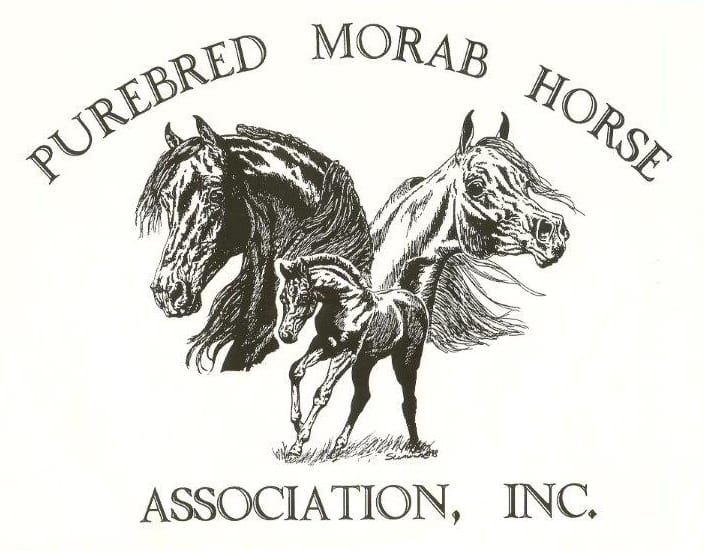From the very earliest times, the Morgan community has been divided by factionalism. First, there were the pedigree wars. Starting with the pedigree of Justin Morgan himself — bitter battles were waged in the livestock journals of the day disputing the lineage and virtues of many early stallions. By the third generation, there were already different families, each with its detractors and enthusiasts. The offspring of Black Hawk, a grandson of Justin Morgan by Sherman, were considered by some to be a completely separate breed. Gifford, another grandson of old Justin by Woodbury, established another distinct family.
Indeed the Black Hawks and the Giffords represent the first major split in Morgan type. Black Hawk and his World Champion Trotter son Ethan Allen, and his son Daniel Lambert, were tall and elegant with tremendous speed at the trot. Gifford and his son Hale’s Green Mountain were the epitome of the original stout but handsome type. Thus in the 1840s, the argument over old-type and new-type had already begun, and it continues to this day. An interesting modern development is the emerging Lambert line which knits together both the early families, with the Lippitts carrying the Gifford line and Jubilee King contributing the blood of the Black Hawks through Daniel Lambert.
During the later part of the 1800s, much of the Black Hawk blood was lost to the emerging Standardbred and American Saddle Horse breeds. The Giffords, while never as numerous, held their own as farm and general purpose horses in the isolated hill country of New England. Only a few of each line survived to breed on after the advent of the motor vehicle ended the usefulness of the horse in American life.
The Government Morgans
By the early 20th Century, there was concern that the Morgan breed was facing extinction. Remembering the excellence of Morgans as cavalry horses during the Civil War, the U.S. Government moved in 1905 to establish a breeding program that continued until 1951. The Department of Agriculture had commissioned a study in 1904 to determine the characteristics of the ideal cavalry horse and found that the Morgan fit the bill except in the matter of size, and a tendency to flat withers developed over a half century of breeding for harness use. They advertised for mares of Morgan type from 15.1 to 15.3 hands and weighing 1000 to 1150 lbs. Apparently unable to find enough purebreds to meet their exacting standards, the Government acquired among its foundation stock — five unregistered mares, there from Vermont and two Kentucky Saddlebreds rich in Morgan blood.
Next they accepted from Joseph Battell a handsome breeding farm at Weybridge, Vermont and a stallion of his own breeding, General Gates, which was by a speedy trotting grandson of Ethan Allen 50 and out of a Thoroughbred-cross mare. Traditionalists were outraged, especially when General Gates was bred to one of the Kentucky mares to produce, in 1908, Bennington — who later became herd sire at the Farm. In the third generation there was an infusion of old-type blood when Artemisia, an impeccably bred daughter of Ethan Allen 3rd, was crossed with Bennington to get the outstanding siblings Mansfield, Canfield, Querido and Ulysses. Early on, other strongly bred Morgans such as Troubadour of Willowmoor, purchased in 1911 along with 12 mares and 4 other stallions from J.W. Clise in Washington state, and the Headlight Morgan daughter, Sunflower Maid (dam of Linsley) brought from Kansas the same year, were added to the program.
The Government Farm was not long in proving the worth of its stock. Between 1919 and 1926, the U.S. War Department and some breed organizations sponsored annual 300-mile endurance rides. Castor and Gladstone, geldings by General Gates, were successful in these grueling tests, and assured that Morgans would be included in the Army remount program. Begun in 1921 to insure an adequate supply of cavalry mounts after the loss of almost a million American horses and mules in Europe during WWI, the Remount Service provided purebred stallions to ranchers and farmers across the country with the undersanding that the offspring could be purchased by the Army as needed. At the height of the program in the 1930s, over 600 stallions, mostly Thoroughbreds, were siring almost 10,000 foals each year. Although Morgan stallions were in great demand throughout the nation, only about 20 were available to Remount stations each year due to their limited numbers. Some well-known Morgan remount stallions were Abbott, Rockwood, Revere, Delmont, Haven, Ulysses and Romanesque.
The Government also bred Morgans and Morgan/Thoroughbred crosses at the U.S. Range Livestock Experiment station in Montana between 1925 and 1934, supplied Morgans to upgrade the horses on several Indian reservations and in the 30s and 40s exported breeding stock to foreign countries.
Still trying to increase size and convert from harness to saddle type, the Government Farm again experimented with Saddlebred blood in the 1930s. This time they purchased Morgan Delmont, a Morgan/Saddlebred cross whose blood lives on in the get of Trophy, Vigilmarch, and UVM Highlight. Also a Bennington daughter was sent to the court of Upwey King Peavine to produce Upwey King Benn (originally named Jefferson), who sired Upwey Ben Don and his full sister, Upwey Benn Quietude. Nocturne himself was a straight Government/Brunk cross and it is a genetic mystery that line breeding to him often produces exquisitely beautiful horses that are lacking in knee and hock action.
As long as the Government was selecting for cavalry requirements, performance testing its young stock, and culling ruthlessly to achieve its goals, the program tended to produce large, well-conformed animals with superior qualities, but somewhat lacking in breed type. Once breeders began to focus solely on the show ring in the late 1940s, individuals were selected which exhibited high action, extreme refinement, flat croups and hot temperaments. Less desirable traits such as long Saddlebred heads, shallow bodies, ewe necks and a tendency to mix gaits also surfaced in the quest for the perfect show horse. Over time most of the negative traits have been bred out and the new-type Morgan has stabilized into an elegant show horse. Today descendants of the original Government line tend to look like smaller, prettier European Warmbloods, while their show bred relatives are similar to the National Show Horse — an Arab/Saddlebred cross.
Yet another type to evolve from the Government program is the UVM line. Under the guidance of Don Balch, the University of Vermont horses have developed into a show animal with beautiful heads and plenty of action, but may be somewhat lacking in size and length of neck. In the final analysis, the U.S. Government breeding program has had an extraordinary influence on the modern Morgan, and it remains the basis for the most successful show and sport families — as well as far reaching effects on the development of the Western Working family.

